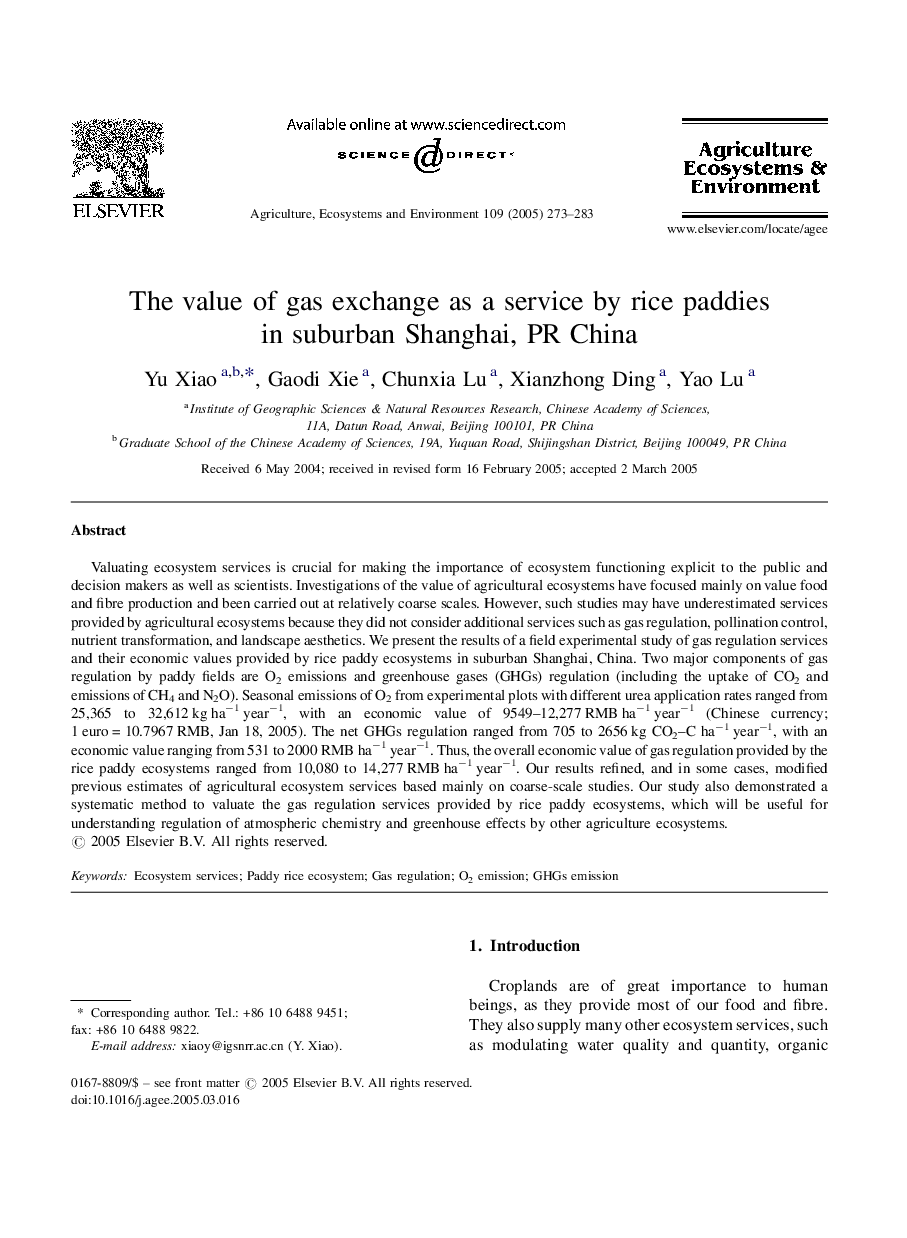| Article ID | Journal | Published Year | Pages | File Type |
|---|---|---|---|---|
| 8970757 | Agriculture, Ecosystems & Environment | 2005 | 11 Pages |
Abstract
Valuating ecosystem services is crucial for making the importance of ecosystem functioning explicit to the public and decision makers as well as scientists. Investigations of the value of agricultural ecosystems have focused mainly on value food and fibre production and been carried out at relatively coarse scales. However, such studies may have underestimated services provided by agricultural ecosystems because they did not consider additional services such as gas regulation, pollination control, nutrient transformation, and landscape aesthetics. We present the results of a field experimental study of gas regulation services and their economic values provided by rice paddy ecosystems in suburban Shanghai, China. Two major components of gas regulation by paddy fields are O2 emissions and greenhouse gases (GHGs) regulation (including the uptake of CO2 and emissions of CH4 and N2O). Seasonal emissions of O2 from experimental plots with different urea application rates ranged from 25,365 to 32,612 kg haâ1 yearâ1, with an economic value of 9549-12,277 RMB haâ1 yearâ1 (Chinese currency; 1 euro = 10.7967 RMB, Jan 18, 2005). The net GHGs regulation ranged from 705 to 2656 kg CO2C haâ1 yearâ1, with an economic value ranging from 531 to 2000 RMB haâ1 yearâ1. Thus, the overall economic value of gas regulation provided by the rice paddy ecosystems ranged from 10,080 to 14,277 RMB haâ1 yearâ1. Our results refined, and in some cases, modified previous estimates of agricultural ecosystem services based mainly on coarse-scale studies. Our study also demonstrated a systematic method to valuate the gas regulation services provided by rice paddy ecosystems, which will be useful for understanding regulation of atmospheric chemistry and greenhouse effects by other agriculture ecosystems.
Keywords
Related Topics
Life Sciences
Agricultural and Biological Sciences
Agronomy and Crop Science
Authors
Yu Xiao, Gaodi Xie, Chunxia Lu, Xianzhong Ding, Yao Lu,
